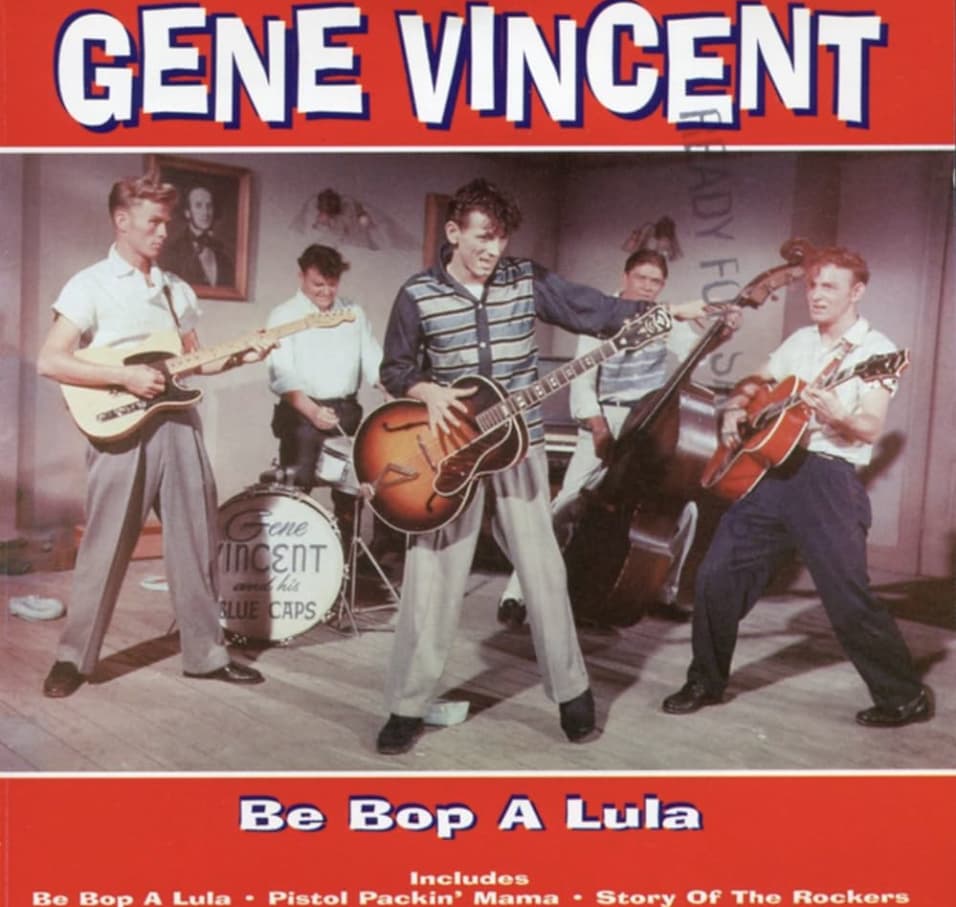
“Be-Bop-a-Lula” by Gene Vincent: A Rockabilly Classic That Defined an Era
Gene Vincent’s “Be-Bop-a-Lula” is more than just a song; it’s a cornerstone of rockabilly, a genre that blended the raw energy of rock and roll with the twang of country music. Released in June 1956, this track became an instant hit, soaring to No. 7 on the US Billboard pop chart, No. 8 on the R&B chart, and No. 5 on the Country & Western Best Seller chart. Across the Atlantic, it reached No. 16 in the UK, cementing Vincent’s place as a significant figure in the burgeoning rock and roll scene.
The origins of “Be-Bop-a-Lula” are steeped in the spontaneity and serendipity that often marks the creation of musical legends. As the story goes, Gene Vincent, recovering from a motorcycle accident at the US Naval Hospital in Portsmouth, Virginia, met Donald Graves, who supposedly penned the song’s lyrics while Vincent composed the tune. The song’s catchy, nonsensical chorus was inspired by the comic strip “Little Lulu” and a playful exchange between Vincent and Graves. The song’s manager, Bill “Sheriff Tex” Davis, later claimed co-writing credits, adding another layer to the song’s mysterious genesis.
The phrase “Be-Bop-a-Lula” itself has deep roots in the musical landscape of the 1940s. It echoes the rhythm and spirit of Helen Humes’ 1945 hit “Be-Baba-Leba” and the bebop jazz movement, further intertwining the song with the broader evolution of American music. By the time Vincent recorded the track with his band, The Blue Caps, on May 4, 1956, at Nashville’s Bradley Studios, the song was primed to capture the rebellious spirit of the youth.
Gene Vincent‘s performance of “Be-Bop-a-Lula” was nothing short of electrifying. The recording session featured some of the era’s most talented musicians, including lead guitarist Cliff Gallup, whose sharp riffs became a defining feature of the track. Drummer Dickie “Be Bop” Harrell added his own flair by letting out two distinctive screams during the recording, ensuring that his presence would be felt – and heard – by listeners everywhere.
The release of “Be-Bop-a-Lula” was a defining moment not just for Gene Vincent but for rock and roll as a whole. The song’s success helped establish Vincent as a contender in the race to rival Elvis Presley, who had already begun to dominate the charts. Vincent’s unique style and the infectious energy of “Be-Bop-a-Lula” offered a fresh take on the rockabilly genre, one that resonated deeply with audiences eager for something new and exciting.
Over the decades, “Be-Bop-a-Lula” has been celebrated and covered by countless artists, its influence extending far beyond its initial release. In 1999, the original 1956 recording was inducted into the Grammy Hall of Fame, a testament to its enduring legacy. Paul McCartney, reflecting on the song in 2020, recounted how it was the first record he ever bought, a memory that underscores the song’s impact on the next generation of musicians.
In a world where music is constantly evolving, “Be-Bop-a-Lula” remains a timeless piece of rock and roll history, a song that continues to inspire and thrill listeners with its blend of rockabilly roots and youthful exuberance. Gene Vincent may have recorded it over six decades ago, but its rhythm, energy, and spirit are as alive today as they were in 1956.